Welcome to a comprehensive tactical analysis of FC Barcelona under the guidance of their legendary former player-turned-manager, Xavi Hernandez. In this exploration, we delve into the intricate tactics and strategic nuances implemented by Xavi as he leads the iconic club back to its roots of possession-based football and intricate positional play. Xavi’s return to Camp Nou has brought renewed optimism and a distinct tactical philosophy that aims to restore Barcelona’s dominance on the domestic and European stage. Join us as we dissect the tactical intricacies of Xavi’s Barcelona, unraveling the patterns of play and tactical innovations that define his managerial tenure at the Catalan club.
Build-up
Low Build-up
In the low build-up, Xavi sets his team up in a 1-4-2-1-3 formation, with the goalkeeper often playing between the center-backs and a number-ten positioned slightly to the right.
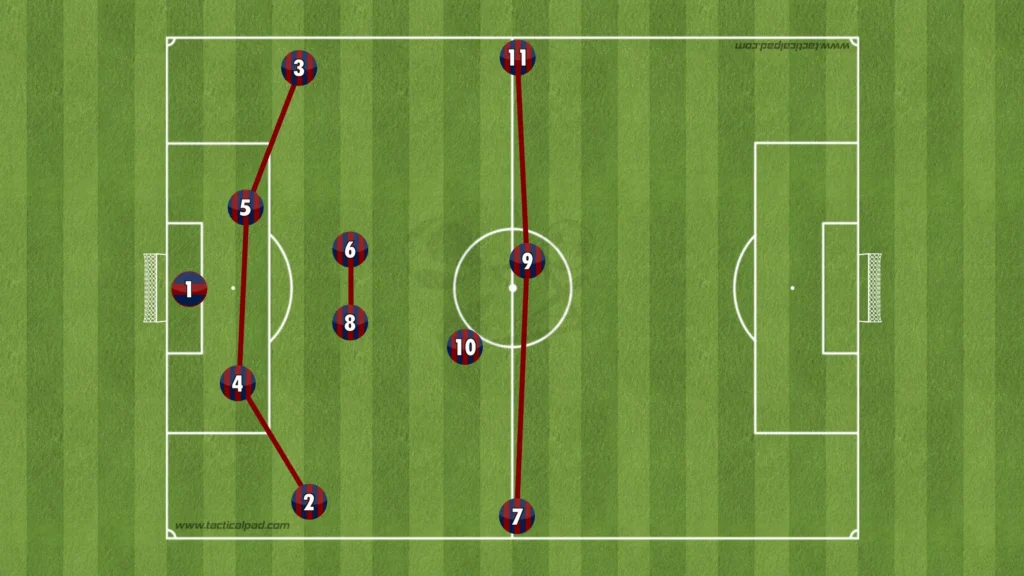
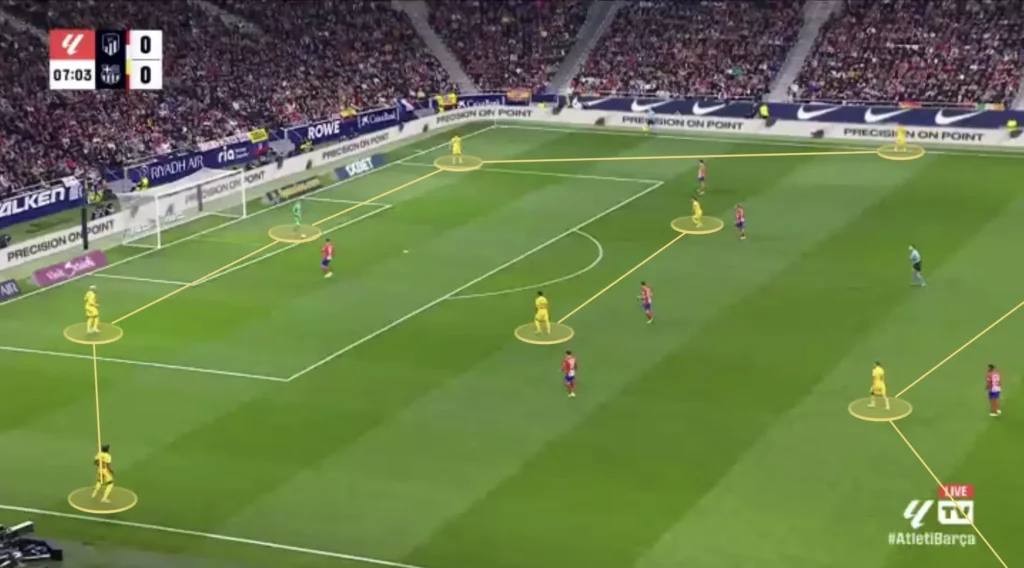
The striker, Robert Lewandowski, often drops during the low build-up, creating a 1-4-2-4 formation with two number-tens and the wingers high and wide.
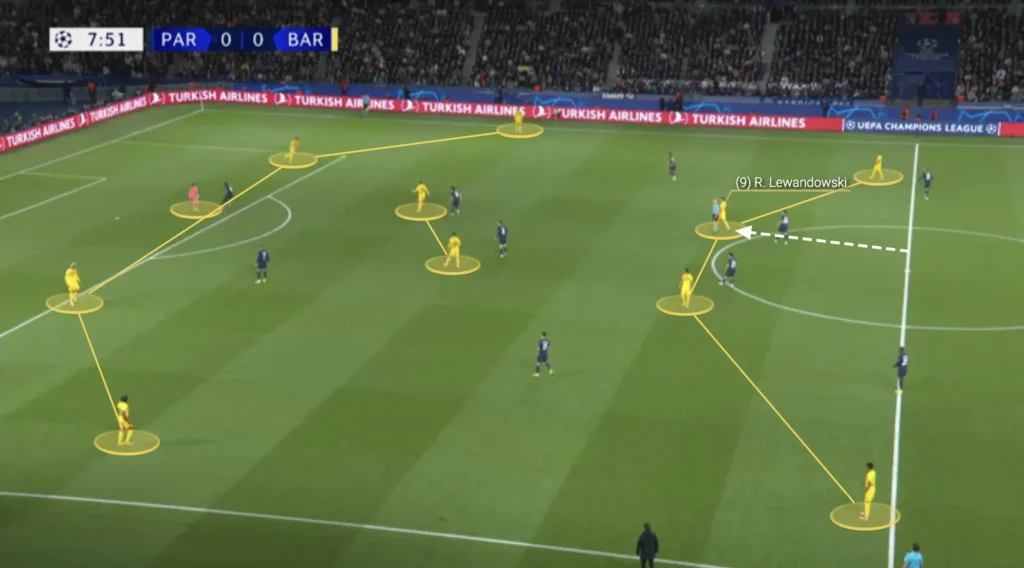
This formation, popularized by Roberto De Zerbi, questions the opposition center-backs, forcing them to make difficult decisions. If they push up on the number-tens, the space behind them opens up, giving the winger a 1v1 against the fullback. However, If they do not push up, a numerical superiority gets created in the midfield, allowing Barcelona to play through the press.
High Build-up
In the high build-up, Xavi’s Barcelona set up in a 1-3-2-5 formation:
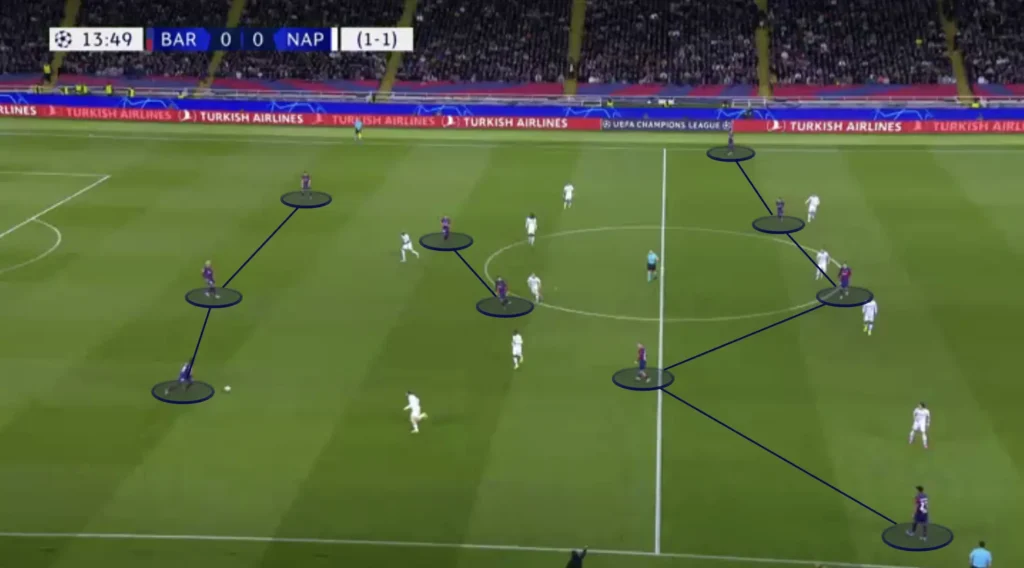
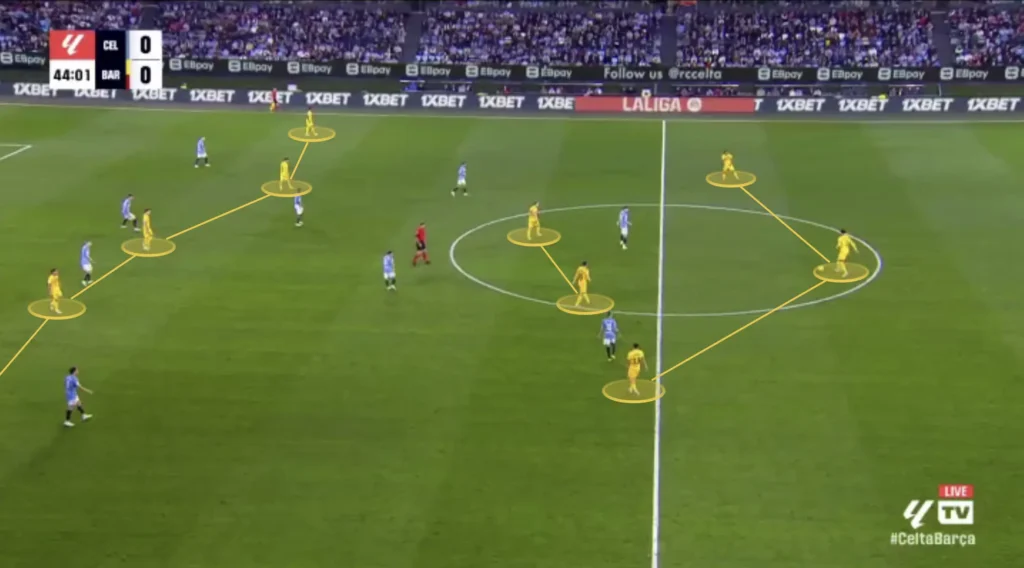
They usually rotate into this formation by pushing the left-back João Cancelo up into a left-wing position, the right-back Jules Koundé in as a center-back, and the left-winger João Félix into the midfield.
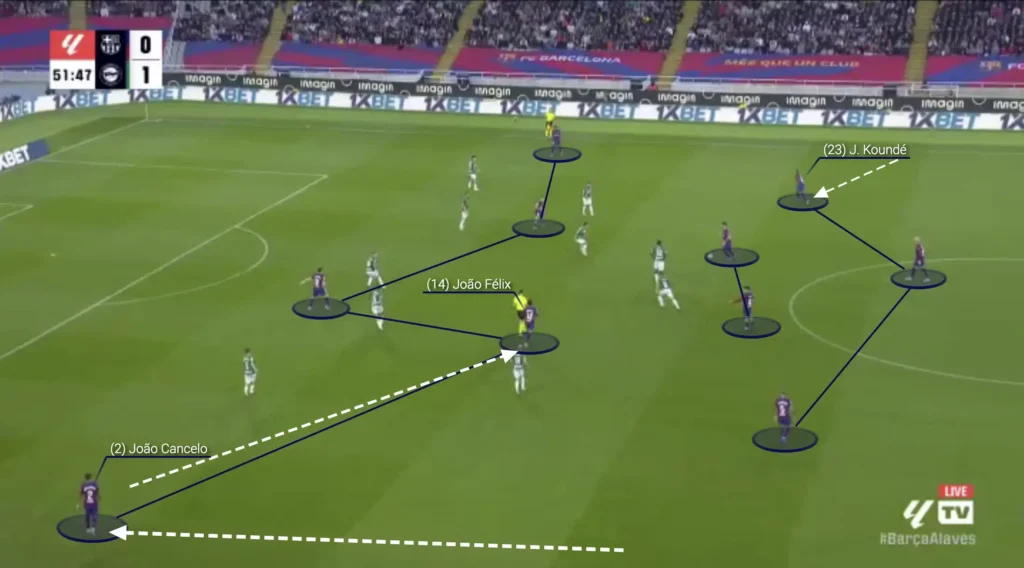
Having four central midfielders(two holding and two attacking) creates more options in the center and less space between the players. Xavi likes this because he prioritizes playing through the middle. He needs one player high and wide to pull apart the backline while the rest create numerical advantages in the midfield areas. This builds good conditions in defensive transitions, allowing more players to press when they lose the ball. Another purpose for keeping many players in the middle is to shorten the distance between them. This shortens the length of the passes, which naturally shortens the time between passes. This means the opposition players will have less time to push up and press, giving the Barcelona players more time and control.
High Backline
A massive aspect of Xavi’s high possession build-up is they keep a high backline. This helps in the counterpress because they get closer to the center. Having more players close to the center who can win the ball back makes it difficult for the opposition to do anything when they win possession. Furthermore, the high backline shortens the distance between players, shortening the time and length of the passes and preventing the opposition from pushing up their defense.
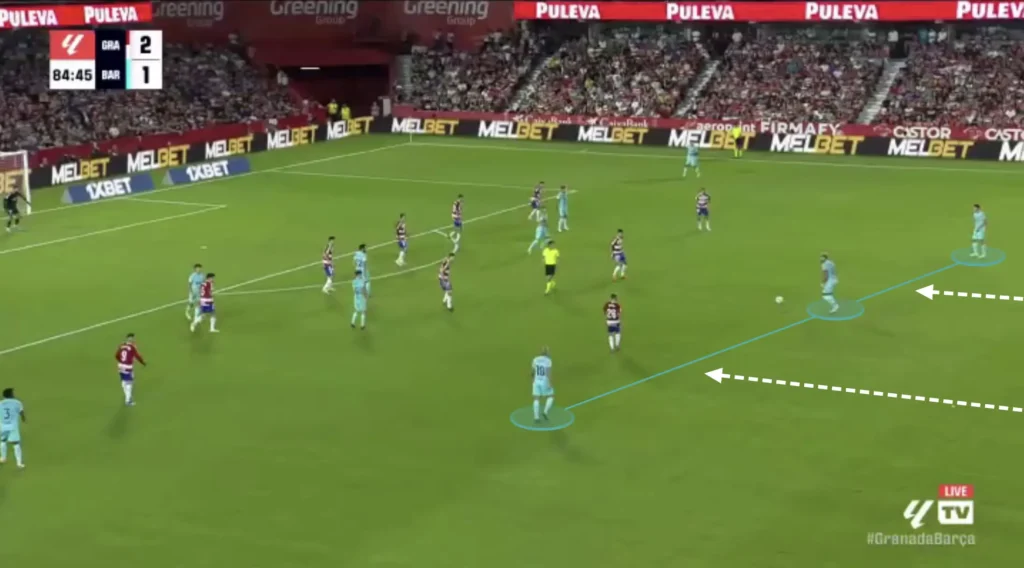
Counter-Movements
Barcelona use counter-movements to create space in the build-up. The number-ten will, for example, often make the run in behind when the striker drops during the low build-up. A center-back usually follows the dropping striker, which opens the space behind the center-back. The number-ten runs into the opened space and receives a long ball from the backline or goalkeeper.
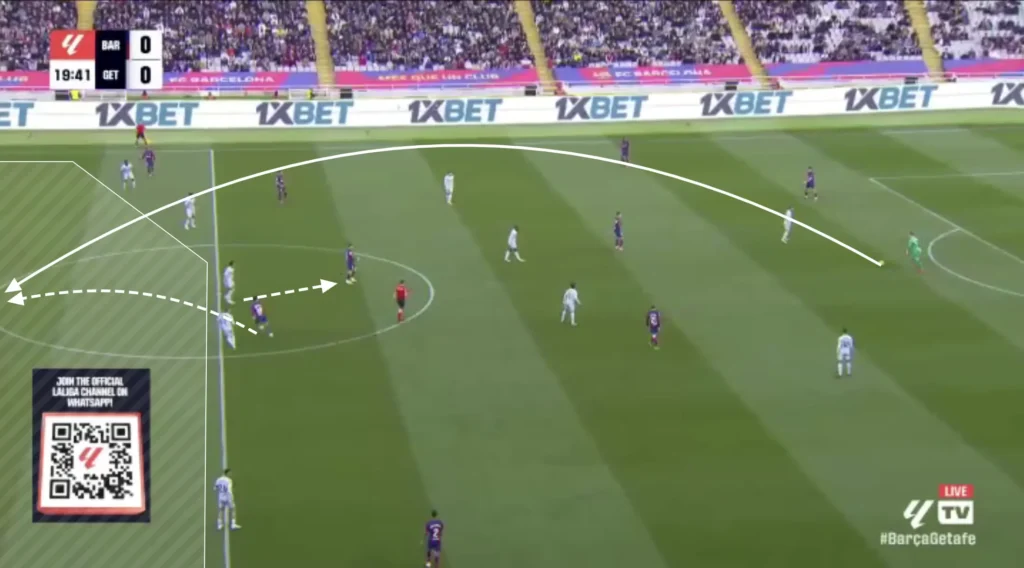
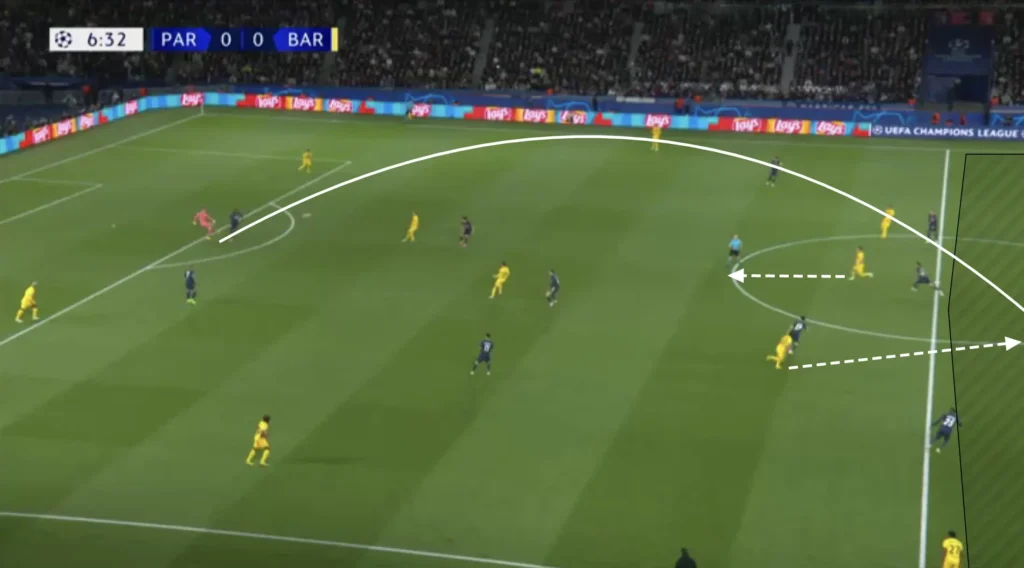
They also use these counter-movements in the high build-up. The striker will drop and draw out a center-back, which opens the space in behind for a run from an attacking midfielder.
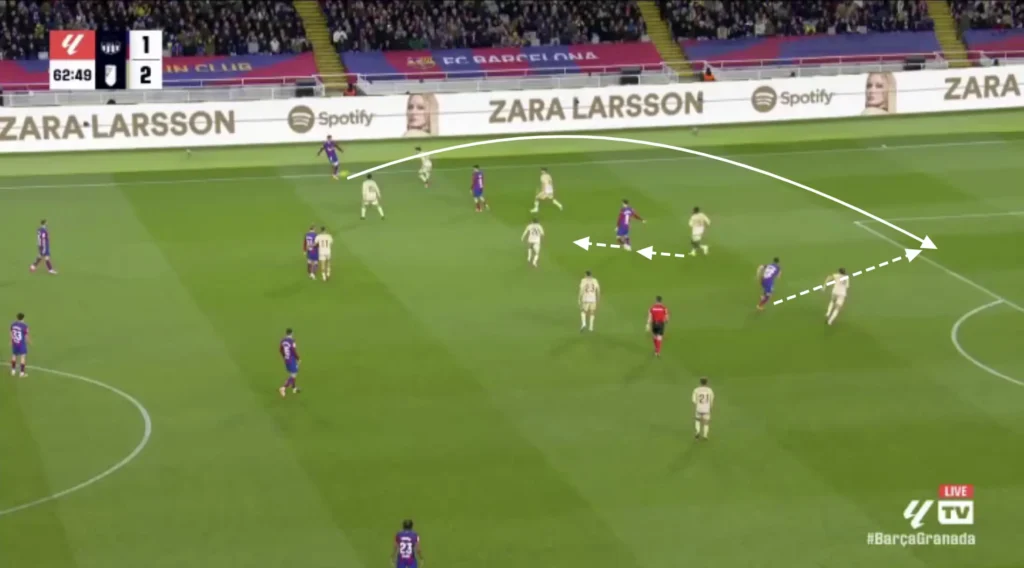
Sometimes, the center-backs drop to cover the run from the midfielder instead of pushing up on the dropping striker. This leaves the striker wide-open, which enables him to receive the ball with space and time to turn and attack the defense.
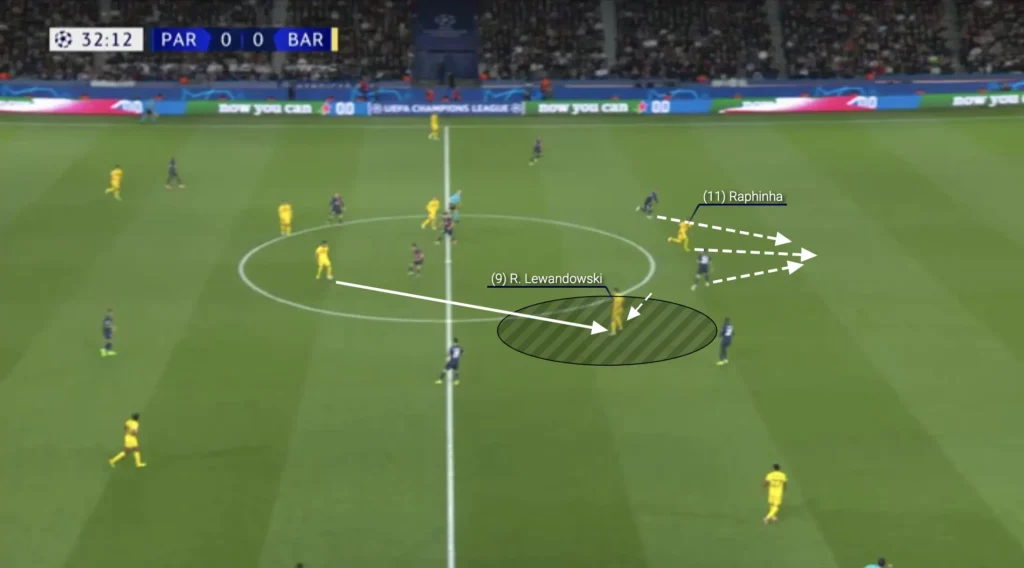
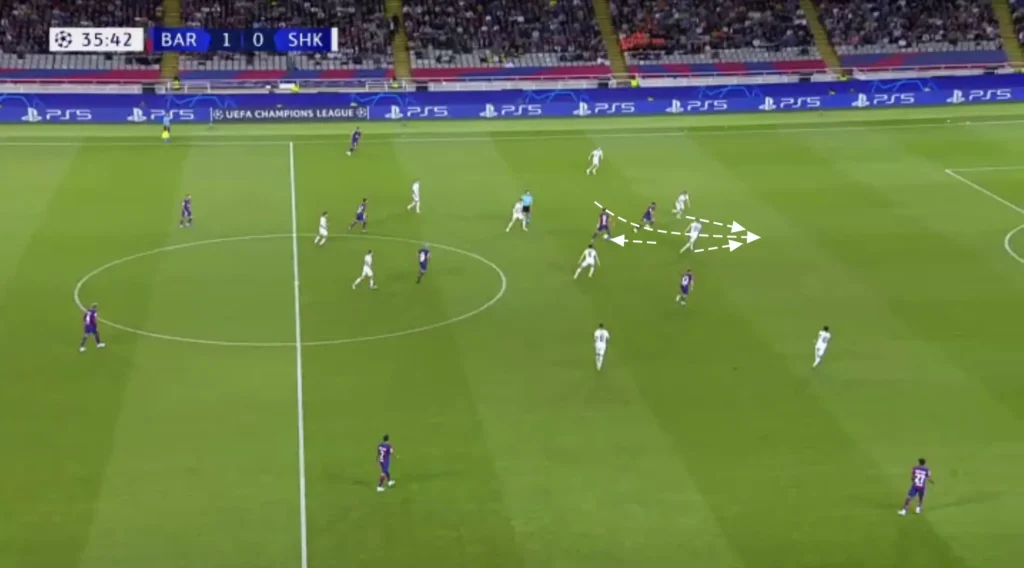
Finding the Pockets
Barcelona always try to find the attacking midfielders in the pockets. Their midfield numerical superiority usually means that at least one will be open. They will look for passes from the back or the wing, breaking lines and finding an attacking midfielder who will turn and drive at the defense.
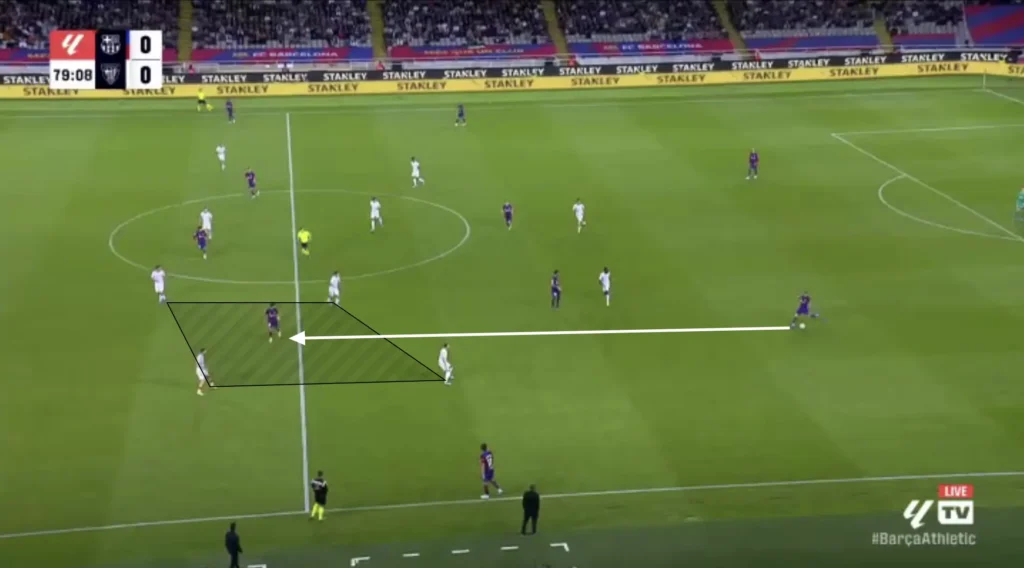
Final Third
Attacking the Half-Space
FC Barcelona is a great team in the final third. They create many chances, mainly by attacking the space between the opposition center-back and fullback. They primarily do this from the wide areas with underlaps from midfielders.
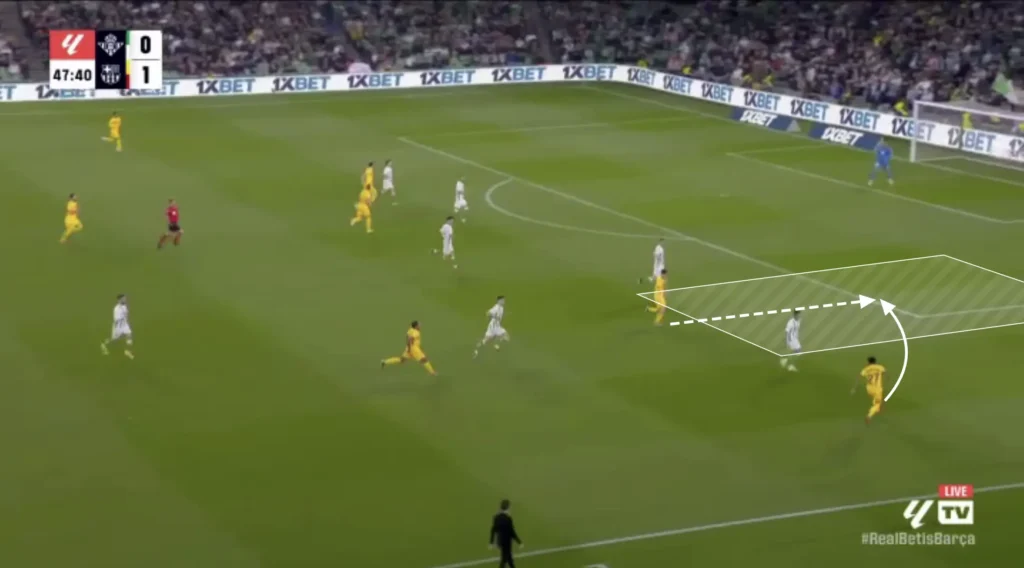
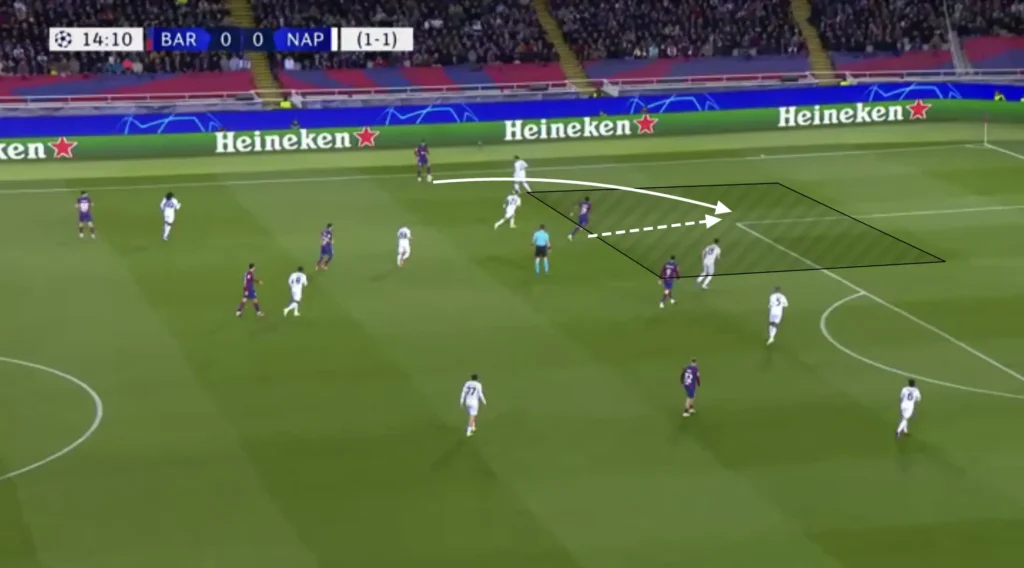
Many Players in the Box
The attacking midfielders and wingers look to make runs into the box when the ball is in the final third, often getting four or five players into these areas to create overloads. The numerical advantages in the box force the defending team to make decisions and leave some players open.
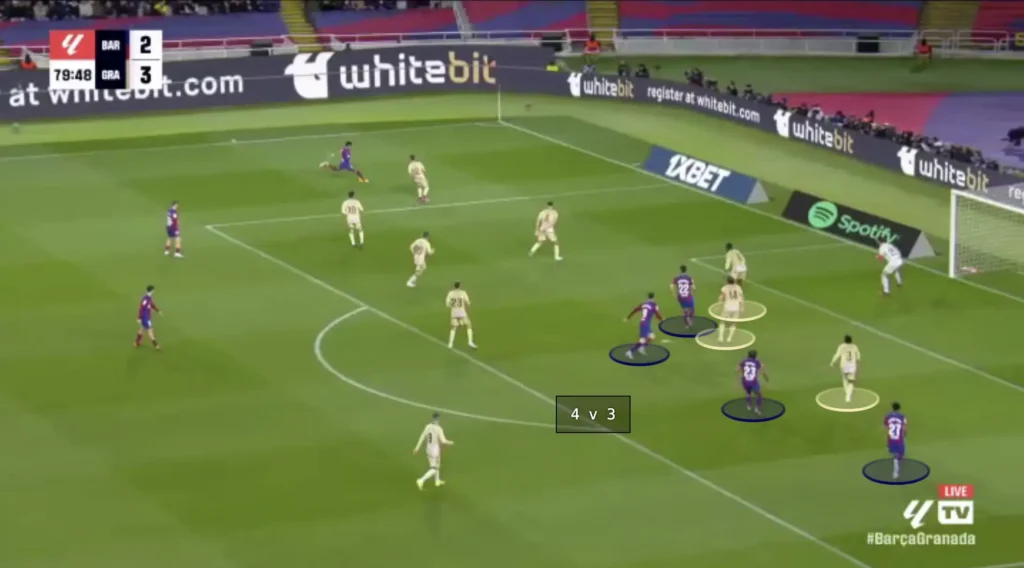
Xavi also positions many Barca players outside the box, ready for the second balls and cut-backs. They always succeed in pushing down the opposition’s defense, which opens the space in front of the backline. The midfielders will often be found in these spaces with cut-backs, and from there, they can shoot or combine with an attacker to create goalscoring opportunities.
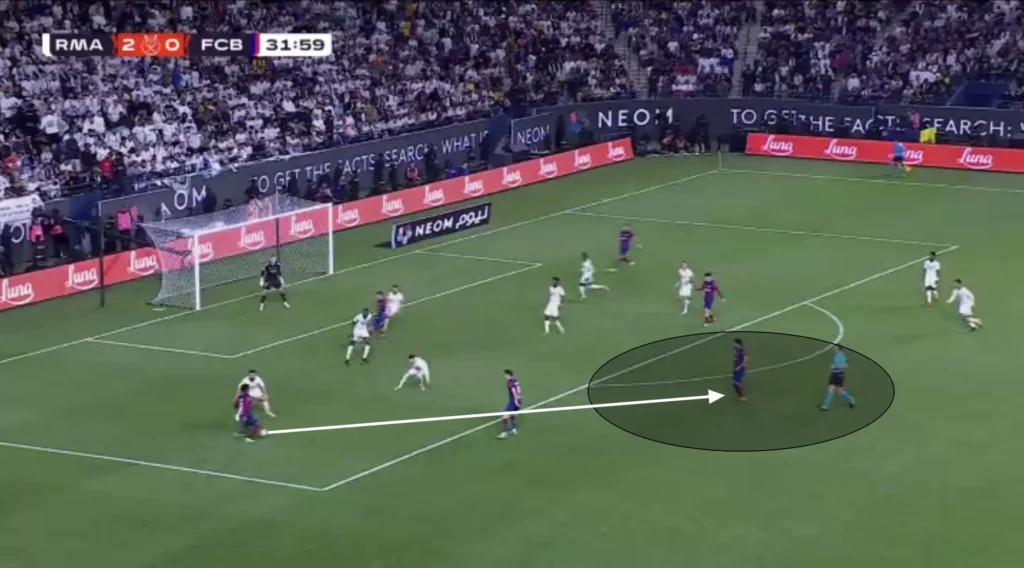
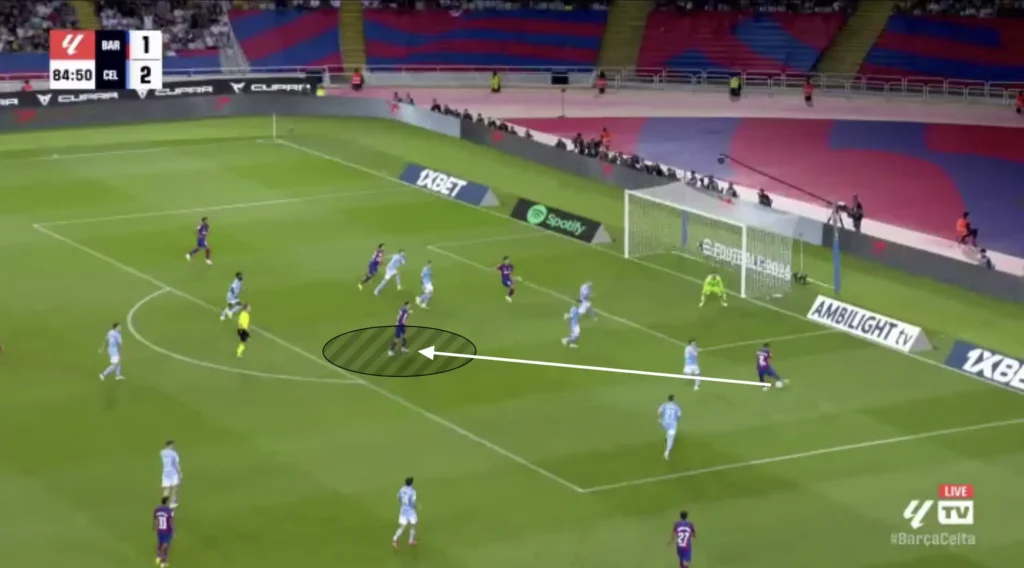
Principles and Tools
Keeping Possession
Xavi has built a possession-oriented style of play at Barcelona that is both mesmerizing and effective. The team’s commitment to ball retention is evident in their meticulous build-up from the back, involving the goalkeeper and center-backs circulating the ball with short, purposeful passes. The emphasis on players’ positioning and movement creates passing triangles, offering multiple options and ensuring constant ball circulation. Xavi’s Barca patiently breaks down defenses, looking for the optimal moment to unlock opposition lines. This possession-focused approach allows them to control the game’s rhythm while wearing the opponents down, giving Xavi’s team more energy later in games.
Numerical Advantages
Another massive aspect of Barcelona’s high build-up is their ability to create numerical advantages against the opposition’s defensive line. Their front five naturally becomes numerically superior against a back four, which they are great at taking advantage of.
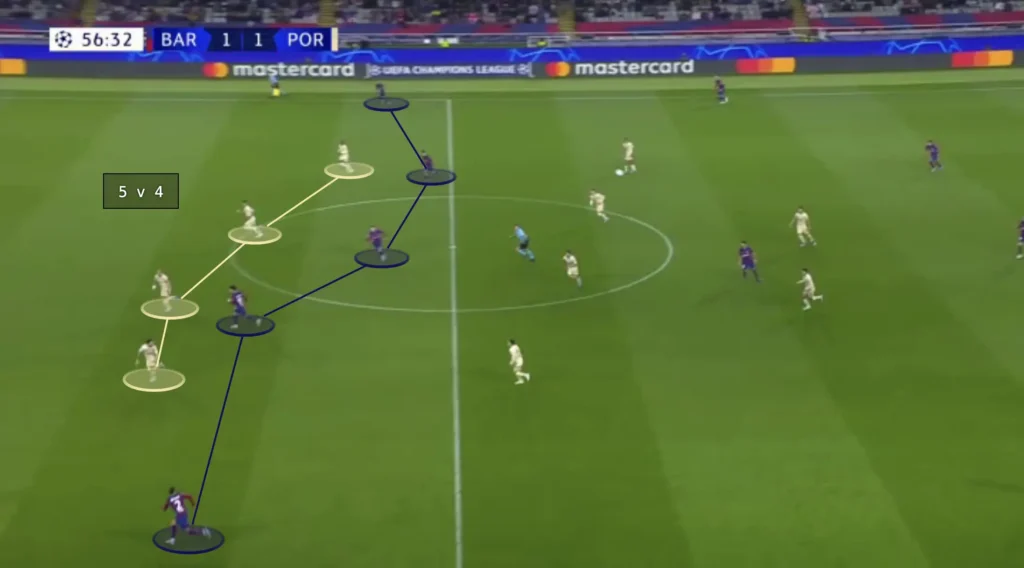
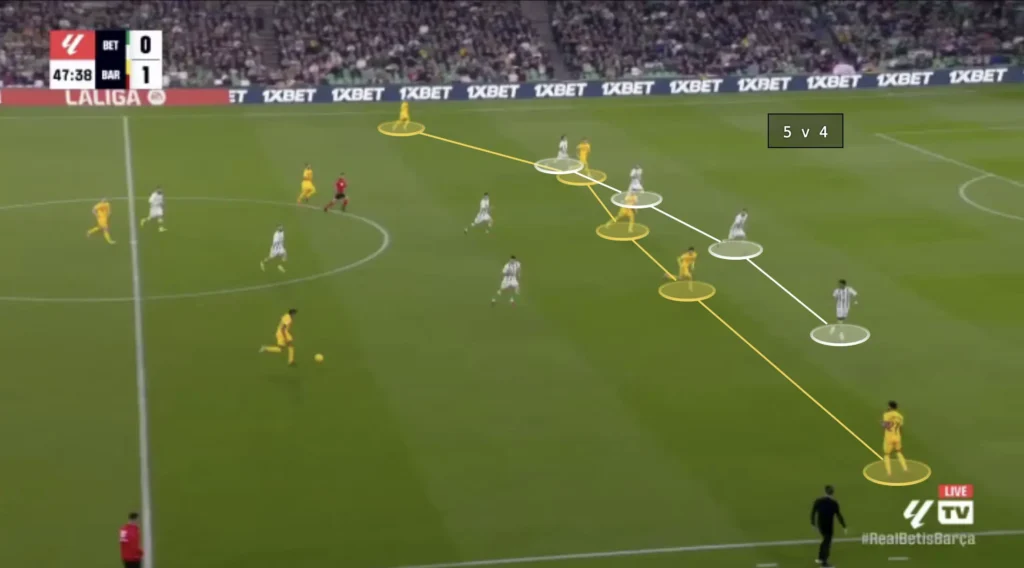
When the defending team is positioned on one side, the weak-side fullback becomes vulnerable to the long switch of play due to the 1v2 against Barca’s winger and attacking midfielder. Xavi’s team often capitalizes on this by getting the ball to the winger and creating many opportunities from 2v1 situations on the wing and in the half-spaces.
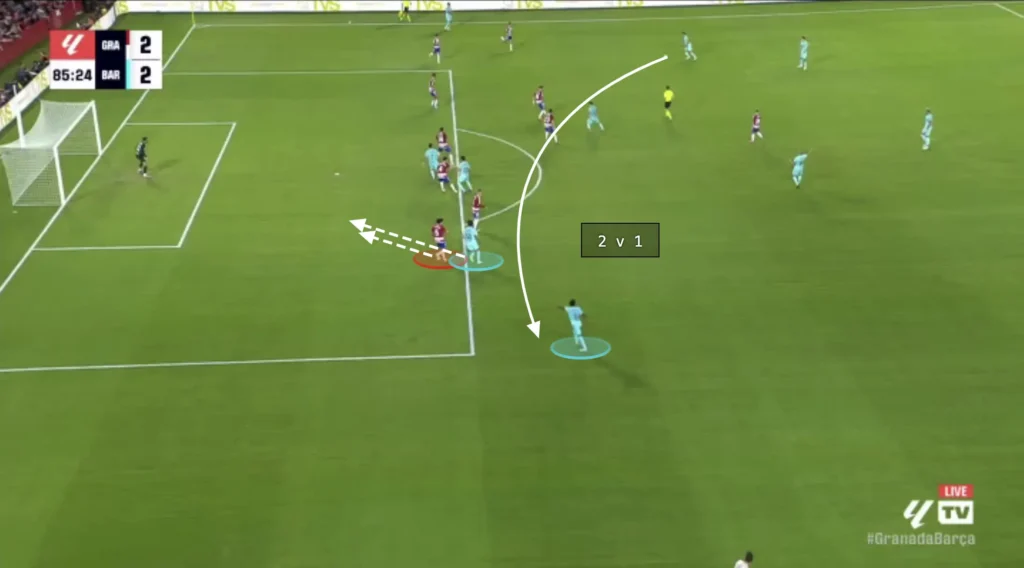
Defending
High Press
Xavi places much value on being aggressive without the ball. This shows in Barcelona’s high pressure. Xavi usually wants his team to go man-to-man and intensely press the opposition. They almost use their high press as an attacking threat, scoring many goals from winning the ball high up the pitch.
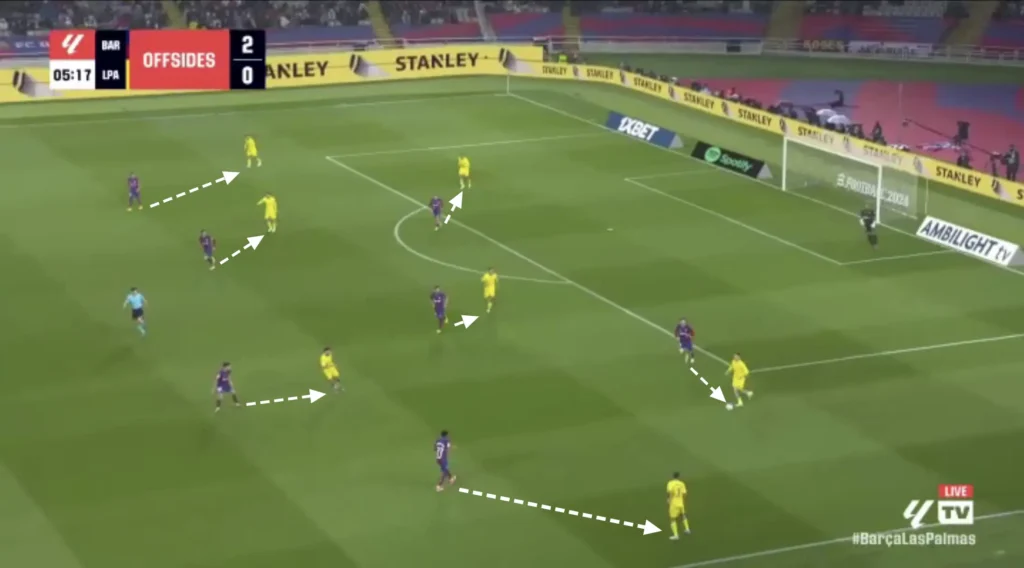
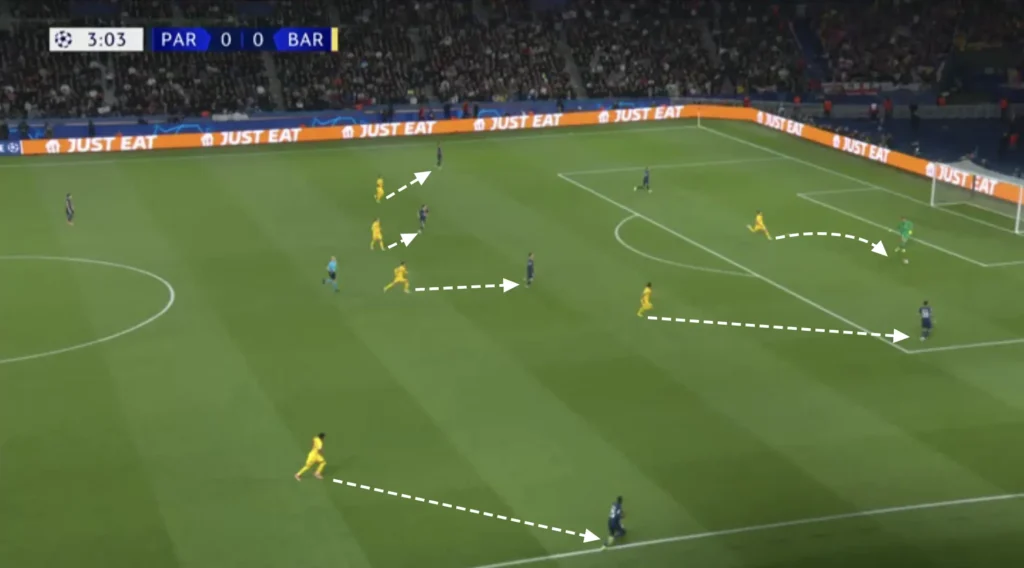
Low Press
In the low press, Xavi’s Barcelona uses a 1-4-4-1-1 formation. They look to set up in a mid-block, always trying to close the center, forcing the opposition out wide.
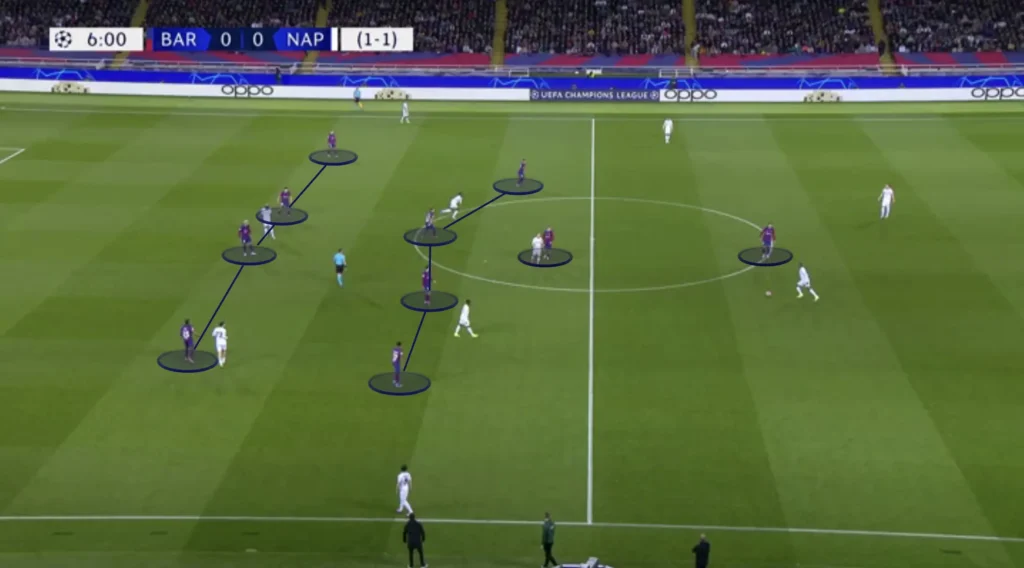
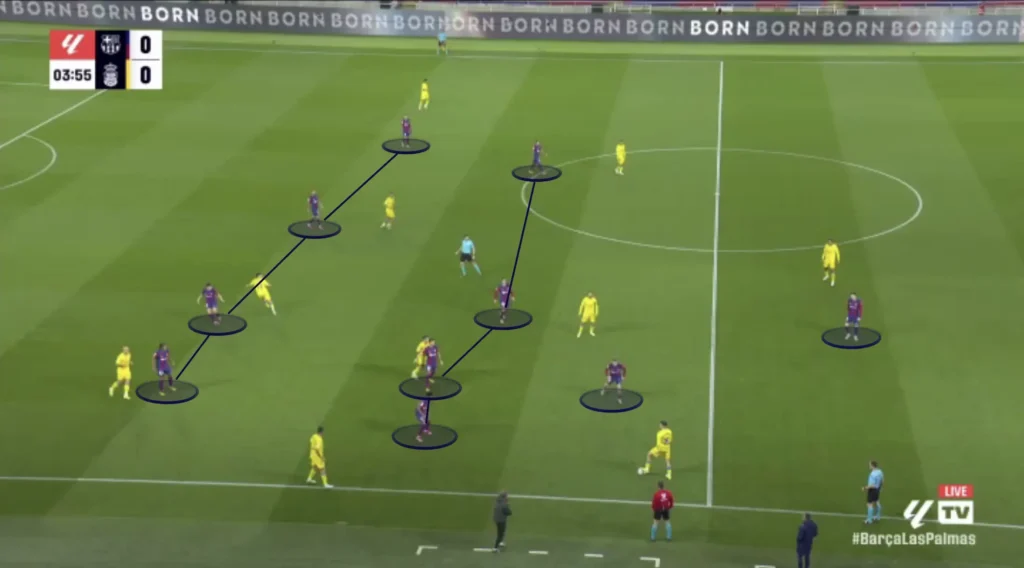
Xavi’s Barca also looks to squeeze the pitch when defending. This means constantly pushing the team up as much as possible when defending. Every time the opponent plays a slow, sideways pass or a back pass, Barcelona’s first line of pressure pushes up, with the rest of the team following to stay compact. When the next pass comes, they push up even more, forcing the opponent back even more. They do this because it pushes the opponent further away from the Barcelona goal, making it harder to create chances.
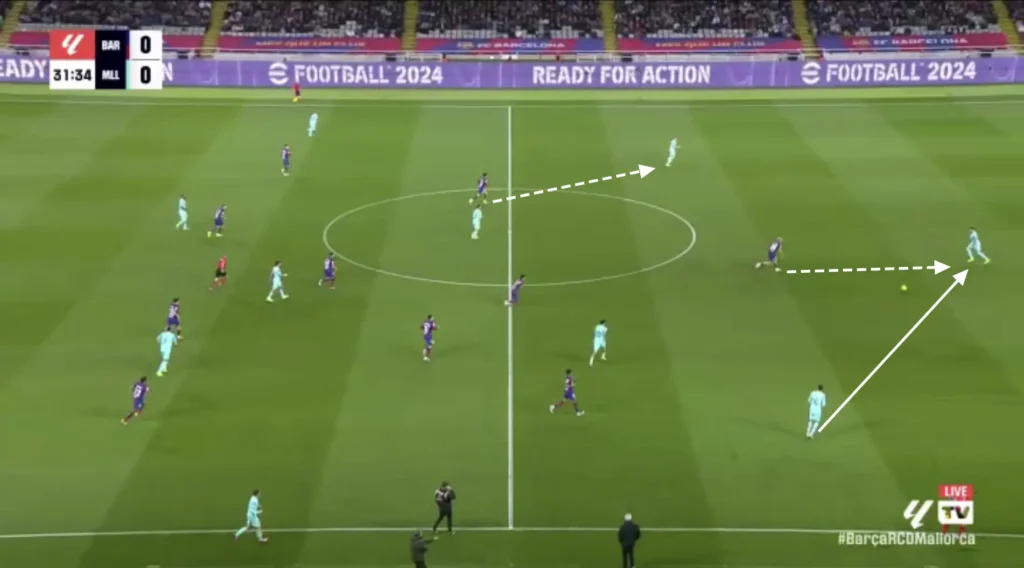
Defensive Transitions
Positioning many players centrally, creating a numerical advantage in the midfield, creates good conditions in defensive transitions. Many players close to the ball after losing possession means that many players can work towards regaining possession. Xavi’s team, therefore, often regains possession directly after losing it. When they regain possession, they try to recycle the ball, not wanting to lose possession again.
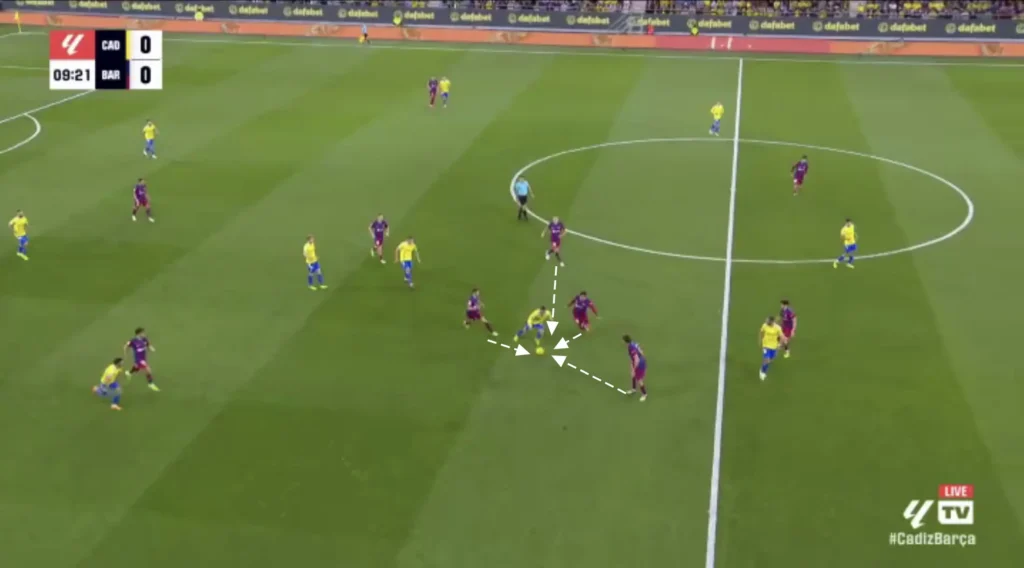
Final Thoughts
In conclusion, this tactical analysis has provided a comprehensive overview of FC Barcelona’s evolution under the guidance of Xavi Hernandez. From the meticulous build-up play to the pressing triggers and defensive organization, Xavi’s imprint on the team’s tactical approach is unmistakable. Under his stewardship, Barcelona has rediscovered its identity, blending elements of tiki-taka with innovative positional play. With a renewed sense of purpose and cohesion, Barcelona appears poised to embark on an exciting journey under the tactical mastery of their legendary former player, Xavi Hernandez.
